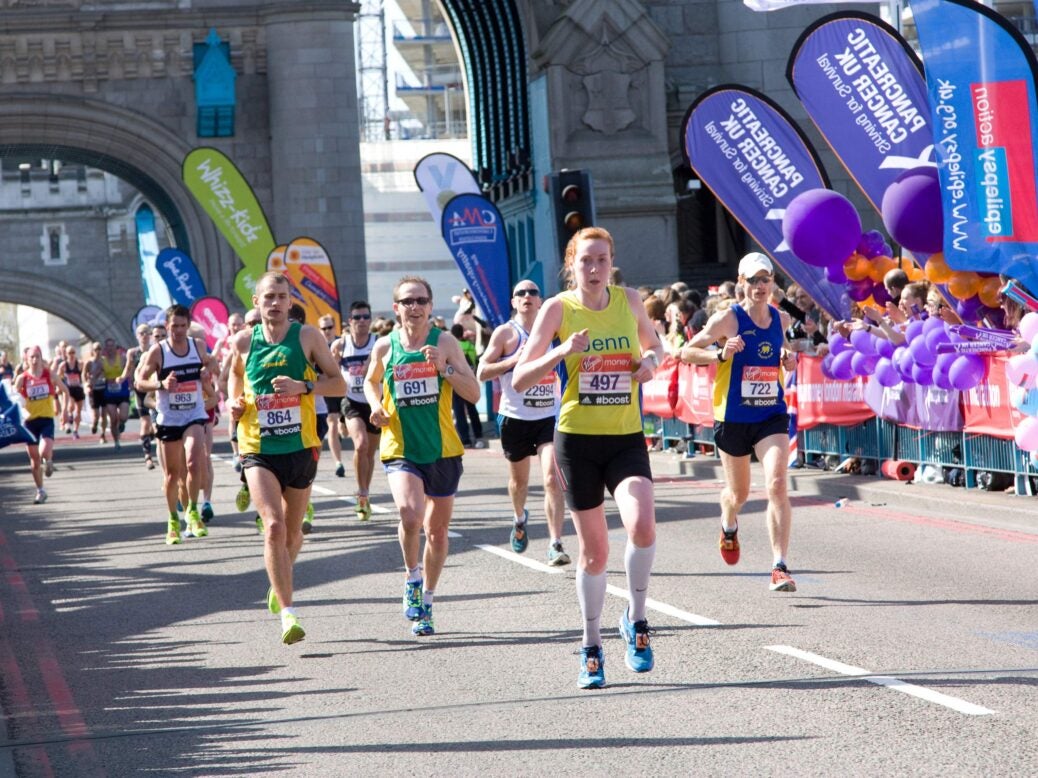
The London marathon showcased the best of humanity, but it is important to recognise the annual one-day event as a triumph for philanthropy too, writes Jennifer Emms
The story that gave rise to the birth of the modern marathon was not a positive one. According to legend, in 490 B.C. following a famous battle in Marathon, the ill-fated Athenian messenger Phidippides ran an impressive 26.2 miles (or 42.195 km) to Athens. Unfortunately, elated after conveying his news of victory, he died of exhaustion.
Now when the marathon comes to town, it is a beacon of light. The atmosphere in London becomes electric, as over 40,000 runners and around 800,000 supporters descend on the capital with music, balloons and costumes galore. And at a point in time where every newspaper seems to be filled to the brim with negative stories, it generates a good news day. The story of the good Samaritan who picked up his fellow runner 200m from the end and helped him across the finish line. The story of the underdog – an amateur runner from Wales – who managed to catch up with and overtake(!) some of the elite runners and qualify as Britain’s entry for the World Championships. Having completed my own first marathon last year, when people that you do not know are cheering your name and willing you to succeed it is incredibly touching. Human nature at its best.
And that is not all: one of the key aims of the London marathon is to encourage philanthropy. Last year, the marathon raised close to £60 million and every year for the last decade it has broken the world record for the highest figure raised by an annual one-day charity event. Even if you are not taking up one of the many official charity places which come with fundraising targets, there are a plethora of organisations that offer a fundraising platform. These make it easy to set up a sponsorship page to support one (or sometimes multiple) charities, with a link that friends and family can use to donate with a few simple clicks. Providers include Virgin Money Giving (the official sponsor), MyDonate and Justgiving. As each comes with different levels of costs and benefits, it is worth weighing them up before you choose your preferred site.
The government has also recently been making changes to make it easier to use technology to donate to charity. Up until recently, in order to obtain gift aid (which essentially allows the charity and a higher rate taxpayer to each reclaim part of the UK tax paid in relation to a cash gift), it was necessary for a gift aid declaration to be made by the donor to the benefiting charity. With effect from 6 April 2017, it will now be possible for donors to authorise an intermediary to give a declaration on their behalf. This will make it easier for tax-efficient gifts to be made through digital mediums such as by text or online.
And, if you happen to see one on the marathon route, it is still not all over for the old-fashioned bucket collection (or the equivalent contactless payments!). Following lower than anticipated take-up by charities, the government has reformed the Gift Aid Small Donations Scheme (which, broadly, provides top-up payments on small donations of less than £20 without the need for gift aid declarations). From 6 April 2017, the government has made it available to new charities (rather than just those who have been in existence for at least two complete tax years) and removed the requirement to have a successful record of gift aid claims.
If, like me, the marathon has left you feeling inspired, do not forget to donate to one of the many worthwhile charitable causes or even dust off those running shoes… there is always next year.
Jennifer Emms is a Senior Associate at boutique private wealth law firm Maurice Turnor Gardner LLP






